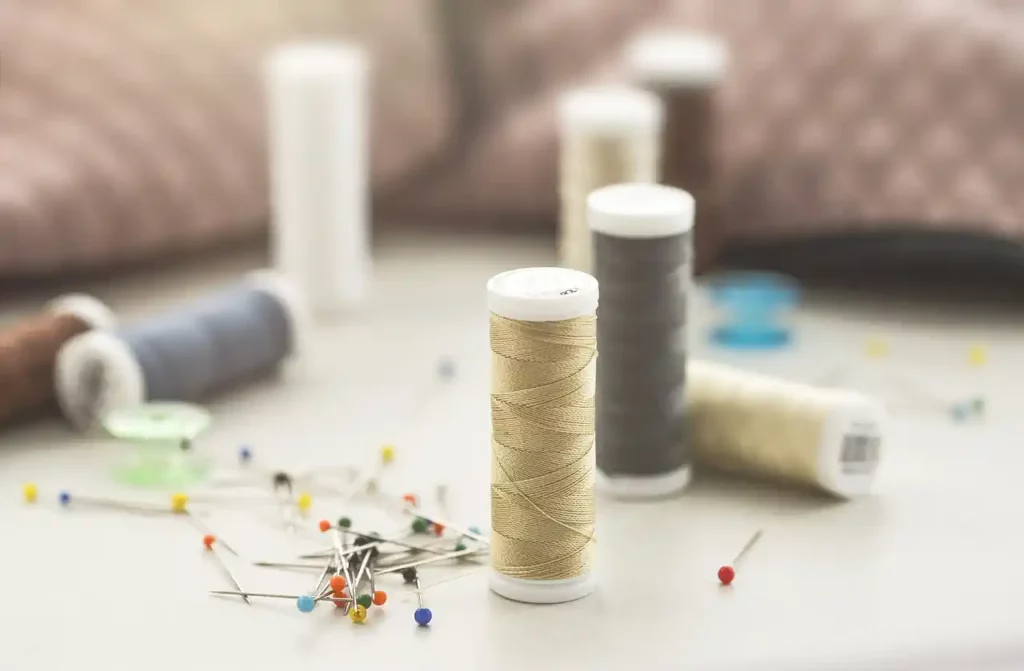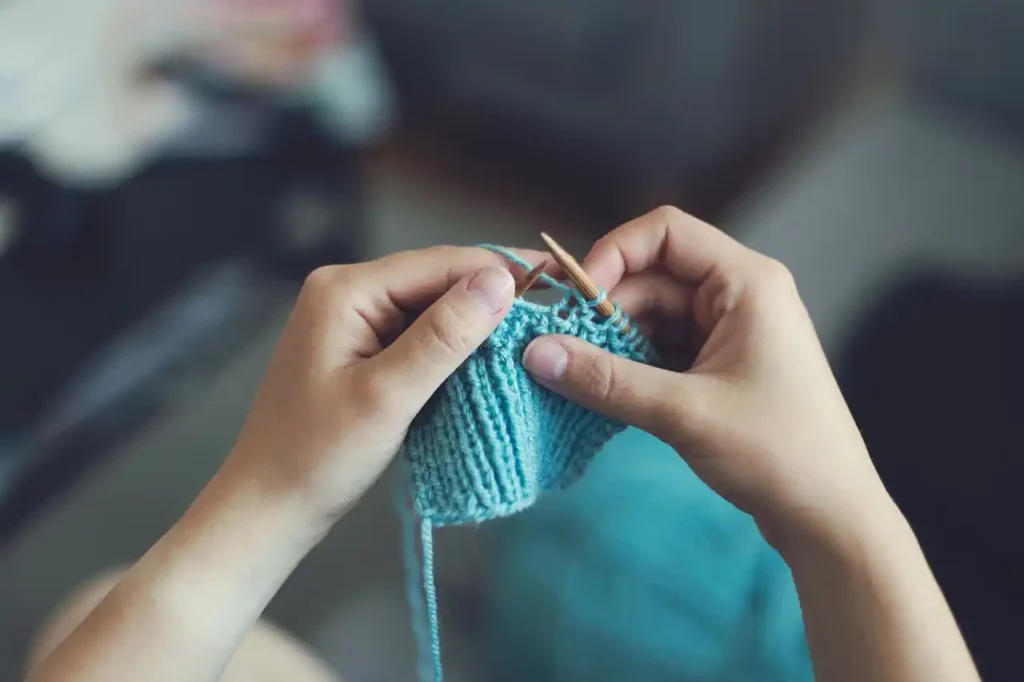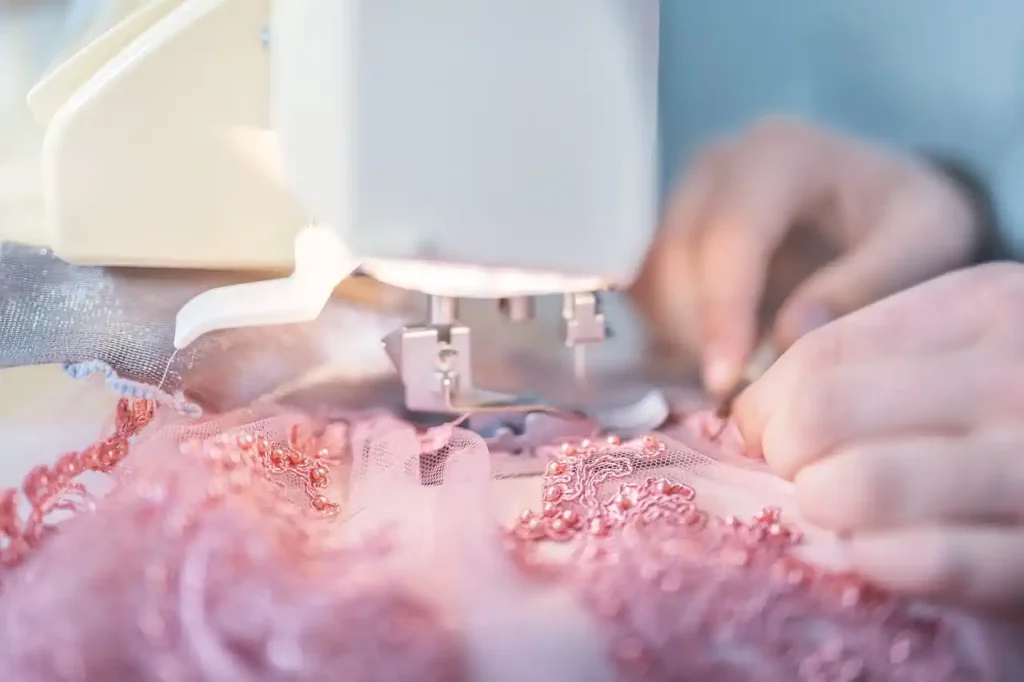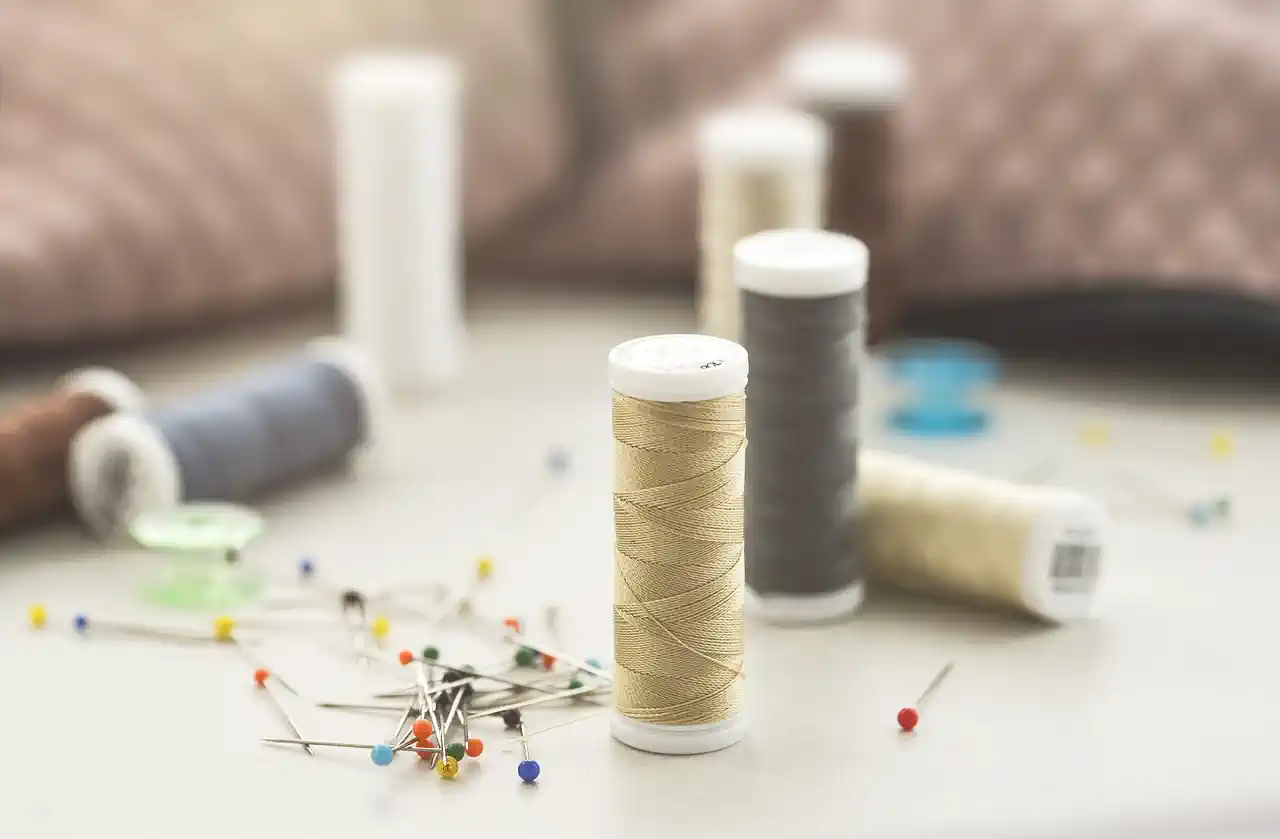How To Make Money Selling Fabric (Complete Guide)
Hello there, fabric fanatics! Are you tired of your mundane job and feeling like your life is unraveling at the seams? Well, buckle up, because I’m about to share the secret sauce on “How To Make Money Selling Fabric”! That’s right, my textile-loving friends, we’re diving into the magnificent world of fabrics and cashing in on those beautiful threads. So, grab your scissors and get ready to cut through the competition, because we’re about to stitch together the perfect blueprint for fabric-selling success!
10 Tips for Starting a Successful Fabric Business

If you have a passion for fabrics and sewing, starting a fabric business can be a great way to turn your hobby into a profitable venture. However, like any business, it requires careful planning, hard work, and dedication to succeed. Here are ten tips to help you start a successful fabric business.
1. Identify your niche
The first step in starting a fabric business is to identify your niche. What type of fabrics do you want to sell? Will you specialize in quilting fabrics, apparel fabrics, or home decor fabrics? Knowing your niche will help you focus your marketing efforts and attract the right customers.
2. Research your market
Once you have identified your niche, research your market. Who are your potential customers? What are their needs and preferences? What are your competitors offering? Understanding your market will help you tailor your products and services to meet the needs of your customers.
3. Develop a business plan
A business plan is essential for any business, including a fabric business. It will help you define your goals, identify your target market, and outline your marketing and sales strategies. It will also help you secure funding if you need it.
4. Choose a location
Choosing the right location for your fabric business is crucial. You want to be in a place that is easily accessible to your target market and has enough space to display your products. You may also want to consider an online store to reach a wider audience.
5. Source your fabrics
Sourcing your fabrics is one of the most important aspects of your fabric business. You want to offer high-quality fabrics that are unique and appealing to your customers. Look for suppliers that offer a wide range of fabrics and have a good reputation in the industry.
6. Set your prices
Setting your prices can be tricky. You want to offer competitive prices that are attractive to your customers, but you also need to make a profit. Consider your costs, including the cost of the fabric, shipping, and overhead, when setting your prices.
7. Create a brand
Creating a brand for your fabric business is essential. Your brand should reflect your values, personality, and unique selling proposition. It should also be consistent across all your marketing materials, including your website, social media, and packaging.
8. Market your business
Marketing your fabric business is crucial to its success. You want to reach your target market through a variety of channels, including social media, email marketing, and advertising. You may also want to attend trade shows and events to showcase your products.
9. Provide excellent customer service
Providing excellent customer service is essential for any business. You want to make sure your customers are satisfied with their purchases and feel valued. Respond promptly to their inquiries and complaints, and go above and beyond to exceed their expectations.
10. Stay up-to-date with industry trends
Finally, staying up-to-date with industry trends is crucial for the success of your fabric business. Keep an eye on the latest fashion and home decor trends, and offer fabrics that are in demand. Attend industry events and conferences to network with other professionals and learn about new products and techniques.
Starting a fabric business can be a rewarding and profitable venture if you follow these ten tips. With hard work, dedication, and a passion for fabrics, you can turn your hobby into a successful business.
The Top Fabric Trends to Sell for Profit
As a fabric seller, it is essential to keep up with the latest trends to ensure that you are offering your customers what they want. Knowing what fabrics are in demand can help you make informed decisions about what to stock and how to market your products. Here are some of the top fabric trends to sell for profit.
1. Sustainable Fabrics
Sustainability is a growing concern for many consumers, and this trend is reflected in the fabric industry. Eco-friendly fabrics such as organic cotton, bamboo, and hemp are becoming increasingly popular. These fabrics are not only environmentally friendly, but they are also durable and comfortable to wear. By offering sustainable fabrics, you can attract customers who are looking for eco-friendly options.
2. Bold Prints
Bold prints are a great way to add interest to any garment or home decor item. From animal prints to geometric patterns, there is a wide range of bold prints to choose from. These prints are perfect for making a statement and adding a pop of color to any outfit or room. By stocking bold prints, you can appeal to customers who want to stand out from the crowd.
3. Natural Fibers
Natural fibers such as linen, silk, and wool are always in demand. These fabrics are breathable, comfortable, and versatile, making them perfect for a wide range of applications. Natural fibers are also durable and long-lasting, making them a great investment for customers who want to buy high-quality products. By offering natural fibers, you can attract customers who value quality and sustainability.
4. Metallic Fabrics
Metallic fabrics are a great way to add some sparkle to any garment or home decor item. From gold and silver to bronze and copper, there is a wide range of metallic fabrics to choose from. These fabrics are perfect for special occasions and can add a touch of glamour to any outfit or room. By stocking metallic fabrics, you can appeal to customers who want to add some shine to their lives.
5. Embroidered Fabrics
Embroidered fabrics are a great way to add some texture and interest to any garment or home decor item. From delicate floral patterns to bold geometric designs, there is a wide range of embroidered fabrics to choose from. These fabrics are perfect for adding a personal touch to any project and can make a garment or home decor item truly unique. By stocking embroidered fabrics, you can appeal to customers who want to create something special.
In conclusion, keeping up with the latest fabric trends is essential for any fabric seller who wants to make a profit. By offering sustainable fabrics, bold prints, natural fibers, metallic fabrics, and embroidered fabrics, you can attract a wide range of customers who are looking for high-quality and unique products. Remember to stay up-to-date with the latest trends and to listen to your customers’ feedback to ensure that you are offering what they want. With the right products and marketing strategies, you can make a successful business selling fabric.
Maximizing Your Profits: How to Price Your Fabric Products

As a fabric seller, pricing your products can be a daunting task. You want to make a profit, but you also want to ensure that your prices are competitive enough to attract customers. Finding the right balance between these two can be challenging, but it is essential to maximize your profits.
The first step in pricing your fabric products is to determine your costs. This includes the cost of the fabric, any additional materials such as thread or zippers, and the cost of labor. Once you have a clear understanding of your costs, you can begin to calculate your profit margin.
One common mistake that many fabric sellers make is underpricing their products. While it may seem like a good idea to offer lower prices to attract customers, this can actually hurt your profits in the long run. Customers may perceive your products as low quality if they are priced too low, and you may not be able to cover your costs and make a profit.
On the other hand, overpricing your products can also be detrimental to your business. Customers may be turned off by high prices, and you may not be able to sell as many products as you would like. It is important to find a balance between pricing your products competitively and ensuring that you make a profit.
One strategy for pricing your fabric products is to use a markup formula. This involves adding a percentage to your costs to determine the final price of your products. For example, if your costs for a product are $10, and you want to make a 50% profit, you would add $5 to the cost to arrive at a final price of $15.
Another strategy is to research the prices of similar products in the market. This can give you an idea of what customers are willing to pay for similar items and help you price your products competitively. However, it is important to keep in mind that your costs may be different from those of your competitors, so you may need to adjust your prices accordingly.
It is also important to consider the value that your products offer to customers. If your products are unique or offer a high level of quality, you may be able to price them higher than similar products in the market. However, if your products are similar to those of your competitors, you may need to price them lower to attract customers.
In addition to pricing your products competitively, it is important to offer promotions and discounts to attract customers. This can include offering discounts for bulk purchases or running sales during certain times of the year. However, it is important to ensure that your promotions do not cut into your profits too much.
Finally, it is important to regularly review and adjust your prices as needed. This can involve monitoring your costs and adjusting your markup formula, or adjusting your prices based on changes in the market or customer demand. By regularly reviewing and adjusting your prices, you can ensure that you are maximizing your profits and staying competitive in the market.
In conclusion, pricing your fabric products can be a challenging task, but it is essential to maximizing your profits. By determining your costs, using a markup formula, researching the market, considering the value of your products, offering promotions and discounts, and regularly reviewing and adjusting your prices, you can find the right balance between pricing competitively and making a profit.
Marketing Your Fabric Business: Strategies for Success
Firstly, it is essential to identify your target audience. Who are the people that are most likely to buy your fabrics? Are they quilters, fashion designers, or crafters? Once you have a clear understanding of your target audience, you can tailor your marketing efforts to reach them effectively. For example, if your target audience is quilters, you can advertise your fabrics on quilting forums and social media groups.
Another effective marketing strategy is to create a strong brand identity. Your brand should reflect your unique selling proposition and set you apart from your competitors. This can be achieved through a well-designed logo, website, and social media presence. Your brand should also be consistent across all platforms to create a cohesive image.
Social media is a powerful tool for marketing your fabric business. Platforms like Instagram and Pinterest are particularly useful for showcasing your fabrics and reaching a wider audience. You can use these platforms to share photos of your fabrics, offer promotions, and engage with your followers. It is also essential to use relevant hashtags to increase your visibility and attract new customers.
In addition to social media, email marketing can also be an effective way to promote your fabrics. You can create a mailing list of customers who have purchased from you in the past and send them regular newsletters with updates on new fabrics, promotions, and events. This can help to keep your brand top of mind and encourage repeat purchases.
Collaborating with other businesses can also be a great way to expand your reach and attract new customers. For example, you could partner with a local sewing or quilting store to offer a joint promotion or host a workshop together. This can help to build relationships with other businesses in your industry and create a sense of community around your brand.
Finally, it is essential to provide excellent customer service to build a loyal customer base. This means responding promptly to customer inquiries, offering helpful advice, and ensuring that your fabrics are of high quality. Word of mouth is a powerful marketing tool, and satisfied customers are more likely to recommend your business to others.
In conclusion, marketing your fabric business requires a combination of strategies tailored to your target audience and brand identity. By creating a strong brand, using social media and email marketing, collaborating with other businesses, and providing excellent customer service, you can attract new customers and grow your revenue. Remember to be patient and persistent in your marketing efforts, and always strive to provide the best possible experience for your customers.
From Hobby to Business: Turning Your Love of Fabric into a Profitable Venture

As a fabric enthusiast, you may have found yourself with a surplus of fabric that you no longer need. Or perhaps you have a talent for creating beautiful pieces of clothing or home decor items. Whatever the case may be, you can turn your love of fabric into a profitable venture by selling it.
The first step in making money selling fabric is to determine what type of fabric you want to sell. Do you want to sell high-end designer fabrics or more affordable options? Do you want to specialize in a particular type of fabric, such as cotton or silk? Once you have decided on your niche, you can start sourcing your fabric.
One way to source fabric is to attend fabric shows and trade shows. These events are a great way to meet suppliers and see the latest trends in the industry. You can also find fabric suppliers online, through websites such as Alibaba or Etsy. When sourcing fabric, it is important to consider the quality of the fabric, the price, and the shipping costs.
Once you have sourced your fabric, you can start selling it. There are several ways to sell fabric, including online marketplaces, such as Etsy or Amazon, or through your own website. You can also sell your fabric at craft fairs or through local fabric stores.
When selling fabric, it is important to consider your pricing strategy. You want to price your fabric competitively, but also make a profit. Consider the cost of the fabric, shipping, and any other expenses, such as packaging and marketing. You may also want to offer discounts for bulk purchases or for repeat customers.
Marketing your fabric is also important. You can use social media platforms, such as Instagram or Facebook, to showcase your fabric and reach a wider audience. You can also create a website or blog to promote your fabric and share your expertise in the industry. Consider offering tutorials or tips on sewing or crafting with your fabric to attract customers.
Another way to make money selling fabric is to create your own products. If you have a talent for sewing or crafting, you can use your fabric to create unique pieces of clothing or home decor items. You can sell these items online or at craft fairs. You can also offer custom orders for customers who want a specific design or fabric.
When creating your own products, it is important to consider the cost of materials, labor, and shipping. You want to price your products competitively, but also make a profit. Consider offering different sizes or variations of your products to appeal to a wider audience.
In conclusion, turning your love of fabric into a profitable venture is possible. By sourcing quality fabric, pricing competitively, marketing effectively, and creating your own products, you can make money selling fabric. It may take time and effort, but with dedication and hard work, you can turn your hobby into a successful business.
Conclusion
Conclusion: To make money selling fabric, it is important to have a clear understanding of the market demand, quality of the fabric, and pricing strategy. Building a strong online presence, networking with potential customers, and offering unique designs can also help increase sales. Consistency and dedication are key to building a successful fabric-selling business.
Related:







